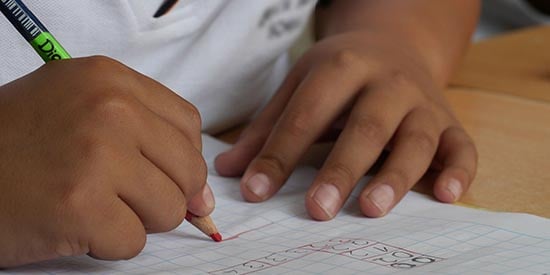New resources ease the school transition for kids with a disability
Media release
As Victorian families get ready for the return to school, a new free and evidence-based resource is helping ease the transition for the one in five children with a disability or developmental challenge.
Deakin's innovative AllPlayTM Learn program - a partnership with the Victorian Department of Education and Training - is now releasing 'Back to School' packs for families and educators through its website.
AllPlayTM founder Professor Nicole Rinehart says the packs have resources for each transition stage, from childcare and kindergarten to primary school, then to secondary school, and finally to post-school education, training or employment.
"Research shows children with a disability are one of the key at-risk groups during school transitions, so we need to get better at working together to support our young people through that period," Professor Rinehart said.
"For the first time, researchers interviewed families and teachers to understand specific issues children with disabilities and developmental challenges face when transitioning, then used these insights to co-design a series of unique resources.
"The AllPlay Learn resources also draw from the best published scientific evidence, distilled from screening more than 177,000 research papers. Our team of clinical psychologists, health and education researchers have sifted through all the national and international evidence so parents and teachers don't have to, giving them access to evidence-based strategies and tools at the click of a button."
The AllPlay Learn transition resources include information sheets, checklists, strategies, schedules, scripts, case studies, stories and videos to help support students make the best transitions in 2020, with materials specifically aimed at parents, students and educators.
Professor Rinehart said any transition could be difficult for children and young people with a disability, but the jump into high school was particularly tricky.
"A student with a disability may feel extra anxious about moving from primary to secondary school, whether that's worrying about how they can manage school work and homework, changes to routines and friendships, or new travel arrangements, teachers, school settings, and classmates," she said.
"Challenges can include increased levels of anxiety due to a new environment, routine and people, as well as the increased expectations of academic, social, behavioural and independence skills.
"Children with disabilities often report being unhappy when transitioning to secondary school due to difficulties making new friendships, and in building connections with many teachers; when they have typically been used to building a deeper relationship with one teacher each year.
"Ramifications from bad transition experiences can include poor academic performance, difficulty making friends, lower self-motivation, negative feelings of self-worth, difficulty coping with negative emotions and more pronounced levels of anxiety."
But Professor Rinehart said there were some simple things parents could do with their children to make the transition easier.
"One of the best strategies for parents can be highlighting the similarities between primary and secondary school to help children or teenagers feel confident they already have many of the skills they will need," she said.
"Some students may also need extra help with things like managing which materials are needed for each class. Visual aids, check-lists and prompts can help cue what is required to complete projects and assignments as well.
"One of the most helpful tips is simply allowing more time for a student with organisation difficulties to reach the desired goal. It might take them longer but there is no reason that they cannot achieve the goal just like any other student.
"Students will all have varying abilities, preferences, strengths, and needs. Some students might need to visit their new school several times to feel familiar and prepared for their transition. Some students may feel anxious about large groups or meeting new students, while others thrive in high energy environments."
Tips for parents with children transitioning into high school:
- Work together - Teachers from your child's primary and secondary school may form a Student Support Group (SSG), involving your child's teachers, support staff, your child, and you. The SSG may develop an Individual Education Plan, which sets out specific learning strategies that build on your child's strengths and what has previously worked well before. Together, you can work out what's needed to provide a smooth transition and ongoing support.
- Plan the transition - The SSG can work together to create a tailored transition plan. This helps your child feel confident about starting secondary school, and helps the school to prepare for your child.
- Prepare your child - Attend the orientation programs, practice new travel arrangements, and read AllPlayTM Learn's secondary stories with your child to show them what happens at school. The AllPlayTM Learn resources include practical things like a locker checklist to help students get ready for the new school year. If your child needs more time getting to know their new school, ask about extending their orientation.
- Consider how you communicate - It is important that you remain enthusiastic and positive when you speak to your child about school as this will increase their confidence. Ask your child if and how they'd like to discuss their disability with specialist teachers (like sports and arts teachers), and other students. You can check out some ideas here.

